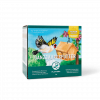What are the differences between coal tit and great tit? What does the coal tit's nest look like? You will find this and other interesting information as well as pictures of the coal tit in our profile.

The Coal Tit (Periparus ater) is a very widespread native breeding bird that – as the name suggests – prefers to stay in dense coniferous forests. He is often associated with his larger relative, the great tit, but which stands out because of its colorful plumage. Coal tits are rather dark and plain birds, which also contributed to their naming: the species name ater means something like "gloomy" in Latin. On the other hand, the little tits are very social, lively birds, which also have a lovely song. How to tell the coal tit from the great tit, even recognize it by its song, and how to spot the little songbird in You can find out how you can support your own garden here in our large profile full of pictures and more exciting facts.
contents
- Coal Tit: Wanted Poster
-
How to recognize the coal tit
- What is the difference between coal tit and great tit?
- What does coal tit singing sound like?
- What do coal tit eggs look like?
- Which habitat does the coal tit prefer?
- Where does the coal tit build its nest?
- When is the coal tit breeding season?
- Where do coal tits spend the winter?
-
Support the coal tit in the garden: Here's how
- What do coal tits eat?
- Which nest boxes are suitable for coal tits?
- How can you provide additional support for the coal tit?
Coal Tit: Wanted Poster
| size | Approximately 10-11cm |
| Weight | Up to 10g |
| breeding season | April - July |
| lifespan | About 5 years |
| habitat | Coniferous and mixed forests, parks and gardens |
| feed preference | insects and seeds |
| threats | decline in food and habitat |
How to recognize the coal tit
Coal Tits are very small, plump birds with a rather large head. These proportions give them a very cute look. The back and elytra of the little tits are gray in colour, their head is jet black and is marked by high-contrast white cheek and neck spots. A small “bonnet” made of black feathers often adorns the crown of their heads. The coal tit's belly and flanks are a dirty beige.
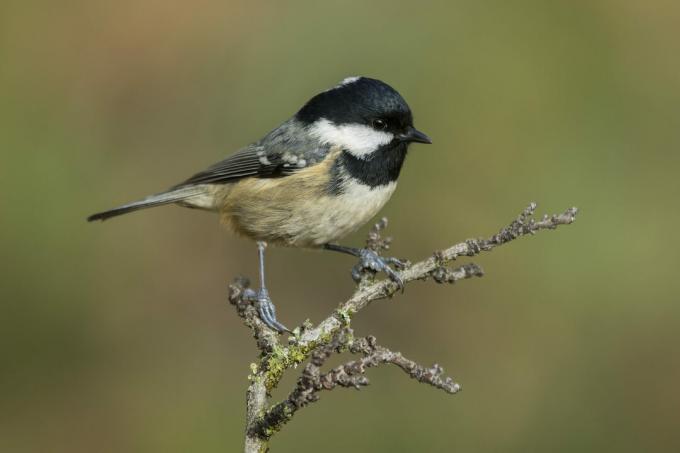
Unfortunately, a visual distinction between male and female coal tits is not possible. The same applies to the young animals: as soon as the little ones leave the nest and have reached their full size, they look confusingly similar to their parents.

What is the difference between coal tit and great tit?
Coal tits and great tits are often confused at first glance. But even at second glance, some differences become apparent: coal tits are much smaller than great tits and not nearly as colorful. Great tits are characterized by a bright yellow belly with a high-contrast black central stripe, while coal tits are simply colored beige underneath. They also lack the blue tips of the great tit's tail and wings. From above you can see the white nape patch, which the larger relatives do not have.
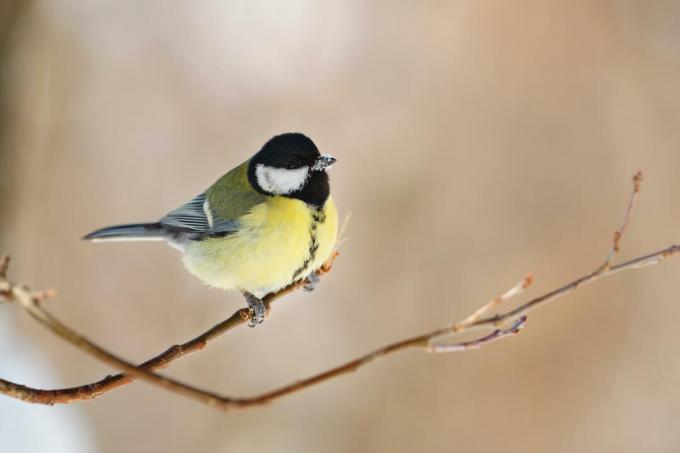
What does coal tit singing sound like?
Coal tits have a particularly lovely, two-syllable song: "Si-tuh-si-tuh-si-tuh-si-tuh". This is very reminiscent of the bird call of the great tit, but is faster, higher and finer and therefore fits perfectly with the smaller coal tit.
This is how the coal tit song sounds:
What do coal tit eggs look like?
Coal tit eggs are about 1.5 centimeters in size, white to off-white in color and dotted with small brown-red speckles. The females can lay up to twelve such eggs per nest. The nest itself is made of grass, moss and other plant fibers and is lined with animal hair and feathers.
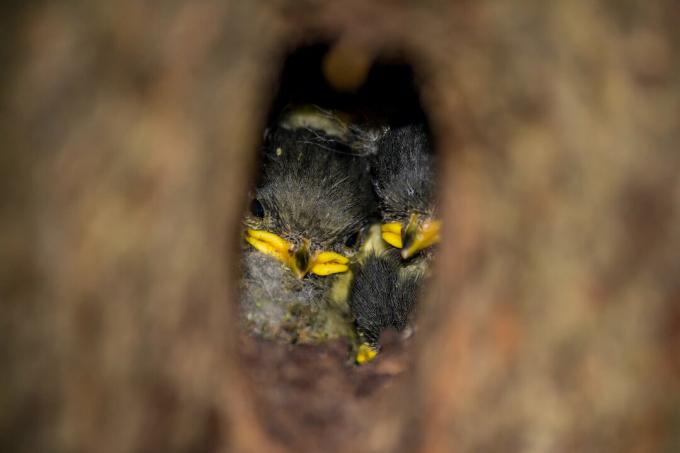
Which habitat does the coal tit prefer?
As the name suggests, coal tits love coniferous forests. They are also found in mixed forests, parks or larger gardens, but even there they stick quite strictly to conifers. Coal tits can be found both in the lowlands and at higher altitudes and feel at home basically anywhere there are conifers.
Where does the coal tit build its nest?
Coal Tits are cavity nesters and very creative when it comes to choosing their nesting site. They use knotholes, hollowed out tree stumps, old squirrel nests and even burrows made by mice or rabbits. The nest itself is made of grass, moss and other plant parts inside the cave.
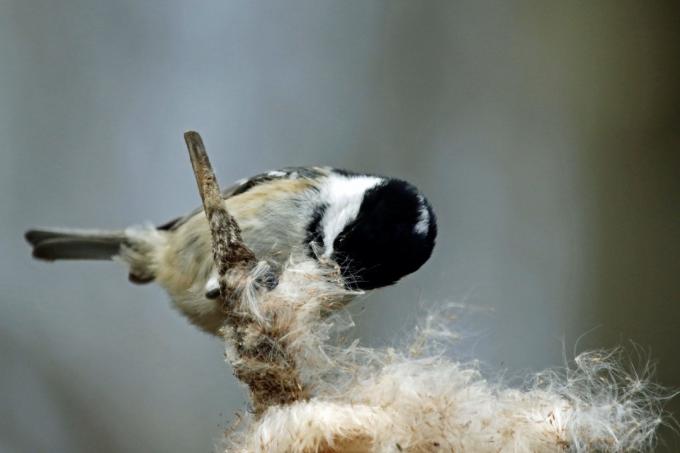
When is the coal tit breeding season?
The breeding season of the coal tit lasts from April to July. As a rule, the bird parents raise only one brood during this time, which can consist of up to twelve offspring. The eggs are incubated for 13 to 16 days and the young birds are fed in the nest for up to three weeks after hatching. After that, the little ones leave the nest and make their first attempts to fly. Nevertheless, they are supported by their parents in their search for food for a few more weeks before they are on their own.
Where do coal tits spend the winter?
Our local coal tits also spend the winter with us. The small birds defy the cold season and like to hang out with other conspecifics and closer relatives, such as great tits or blue tits, in smaller groups foraging together.

Support the coal tit in the garden: Here's how
The small, lively coal tits are also happy to be guests in domestic gardens. Here you can find out how you can offer the songbirds a home and how they can support them in winter and during the breeding season.
What do coal tits eat?
Coal tits feed on a mixture of plant and animal food. In spring and during the breeding season, they like to collect smaller insects from trees and leaves. In late year and winter, on the other hand, they feed on seeds such as larch, beech or fir seeds. They can also be observed at feeding stations, especially in winter. There they particularly like to use litter and grain feed or pure sunflower seeds.
But fat dumplings are also a treat for the little songbirds. Our Plantura fat balls have the advantage that they consist of pure insect fat that is mixed with valuable seeds, nuts and berries. Compared to conventional alternatives made from beef tallow, our fat balls save CO2 and are therefore more sustainable and also represent a much more natural food source for the small garden birds.

Plantura fat balls
Sustainable fat balls without a net,
Species-appropriate wild bird food with insect fat for year-round feeding
Notice: You can find out what you should consider when spreading birdseed and when choosing a suitable feeding place in our special article on the topic "Build your own bird feeder“.
Which nest boxes are suitable for coal tits?
If you want to offer the little coal tit a nesting place in your own garden, you can easily do so Build your own nest box or purchase it. So-called full cavity boxes are best suited for this, which are closed all around except for a small entry hole and are therefore most similar to the natural cavities of coal tits. The entrance hole for the little tits should be 25 mm.

How can you provide additional support for the coal tit?
In addition to bird feed, you can also offer a water point in the garden. This is very important, especially on hot days, and is gratefully accepted by many birds. You don't need a fancy one either bird bath – a flat bowl or a trivet are sufficient. However, it is important that the water points are cleaned regularly, otherwise they can develop into breeding grounds and places of infection for bird diseases. This risk increases with high temperatures, which is why water points are best cleaned daily in summer.
During the breeding season, coal tits are also dependent on a plentiful supply of insects. The design of a insect friendly garden therefore not only benefits six-legged garden visitors, but also supports the little tits in raising their children.
Another small songbird that can also be found here in winter and likes to hide in conifers is this Goldcrest. You can also get to know this garden bird in our next species portrait.
...and receive concentrated plant knowledge and inspiration directly in your e-mail inbox every Sunday!



